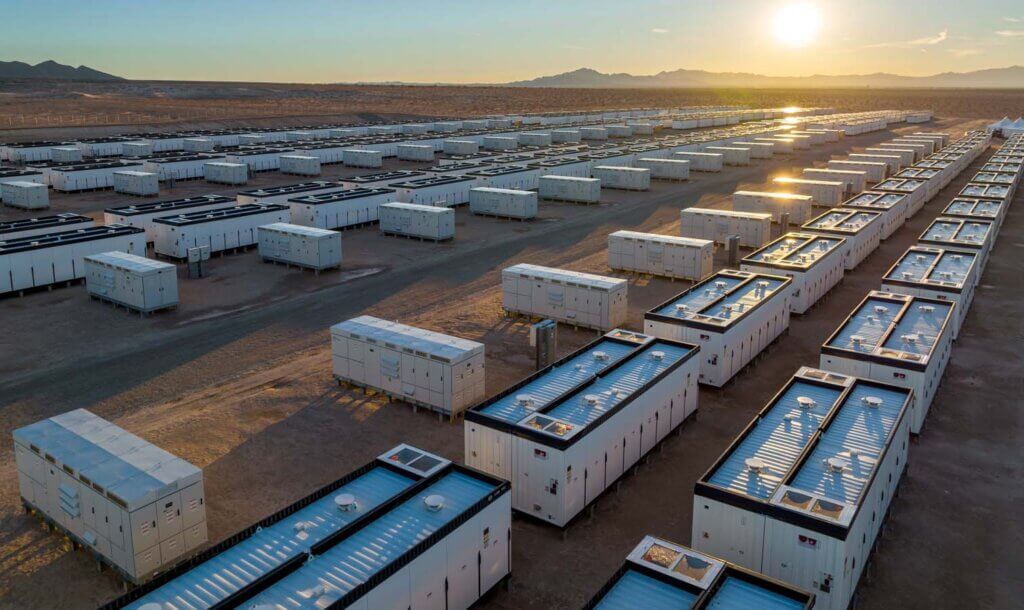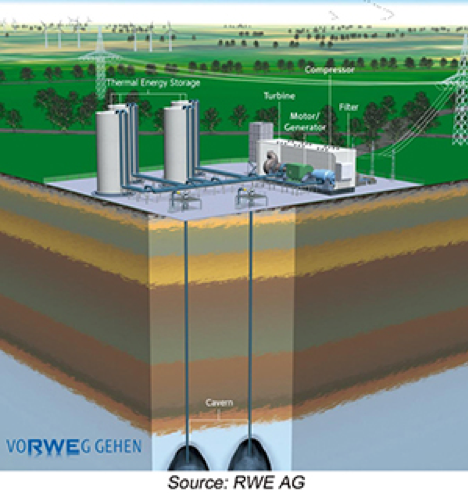Mechanical electricity storage
Mechanical energy storage can be added to many types of systems that use heat, water or air with compressors, turbines, and other machinery, providing an alternative to battery storage, and enabling clean power to be stored for days.
US Energy Storage Monitor
The only comprehensive research on energy storage markets, deployments, policies, regulations and financing.
Simple physics meets advanced technology.
While the physics of mechanical systems are often quite simple (e.g. spin a flywheel or lift weights up a hill), the technologies that enable the efficient and effective use of these forces are particularly advanced. High-tech materials, cutting-edge computer control systems, and innovative design makes these systems feasible in real-world applications.
The flywheel
A flywheel is a rotating mechanical device that is used to store rotational energy that can be called up instantaneously. At the most basic level, a flywheel contains a spinning mass in its center that is driven by a motor – and when energy is needed, the spinning force drives a device similar to a turbine to produce electricity, slowing the rate of rotation. A flywheel is recharged by using the motor to increase its rotational speed once again.

Flywheel technology has many beneficial properties that enable us to improve our current electric grid. A flywheel is able to capture energy from intermittent energy sources over time, and deliver a continuous supply of uninterrupted power to the grid. Flywheels also are able to respond to grid signals instantly, delivering frequency regulation and electricity quality improvements.
Flywheels are traditionally made of steel and rotate on conventional bearings; these are generally limited to a revolution rate of a few thousand RPM. More advanced flywheel designs are made of carbon fiber materials, stored in vacuums to reduce drag, and employ magnetic levitation instead of conventional bearings, enabling them to revolve at speeds up to 60,000 RPM.
You can learn more about flywheel technologies below.
Flywheel Energy Storage Systems (FESS)
Flywheel energy storage systems (FESS) use electric energy input which is stored in the form of kinetic energy. Kinetic energy can be described as “energy of motion,” in this case the motion of a spinning mass, called a rotor.
The rotor spins in a nearly frictionless enclosure. When short-term backup power is required because utility power fluctuates or is lost, the inertia allows the rotor to continue spinning and the resulting kinetic energy is converted to electricity. Most modern high-speed flywheel energy storage systems consist of a massive rotating cylinder (a rim attached to a shaft) that is supported on a stator – the stationary part of an electric generator – by magnetically levitated bearings. To maintain efficiency, the flywheel system is operated in a vacuum to reduce drag. The flywheel is connected to a motor-generator that interacts with the utility grid through advanced power electronics.
Compressed Air Energy Storage (CAES)
Compressed air energy storage (CAES) is a way to store energy generated at one time for use at another time. At utility scale, energy generated during periods of low energy demand (off-peak) can be released to meet higher demand (peak load) periods.
Since the 1870’s, CAES systems have been deployed to provide effective, on-demand energy for cities and industries. While many smaller applications exist, the first utility-scale CAES system was put in place in the 1970’s with over 290 MW nameplate capacity. CAES offers the potential for small-scale, on-site energy storage solutions as well as larger installations that can provide immense energy reserves for the grid.
Isothermal CAES
Isothermal compressed air energy storage (CAES) is an emerging technology which attempts to overcome some of the limitations of traditional (diabatic or adiabatic) CAES.
Traditional CAES uses turbomachinery to compress air to around 70 bar before storage. In the absence of intercooling the air would heat up to around 900K, making it impossible (or prohibitively expensive) to process and store the gas. Instead the air undergoes successive stages of compression and heat-exchange to achieve a lower final temperature close to ambient. In Advanced-Adiabatic CAES the heat of compression is stored separately and fed back into the compressed gas upon expansion, thereby removing the need to reheat with natural gas.
Join American Clean Power
Elevate Your Business with Insider Access:
- Policy Direction: Your voice in critical industry discussions.
- Exclusive Networking: Learn directly from key players in clean energy.
- Insider Information: First-hand access to policy insights and premier events.
- Advanced Tools: Our proprietary data at your fingertips to drive growth.
Act now to become a defining part of clean energy’s future.
Stay informed
Subscribe to American Clean Power and receive the latest clean energy news, policy updates, and opportunities to get involved.






